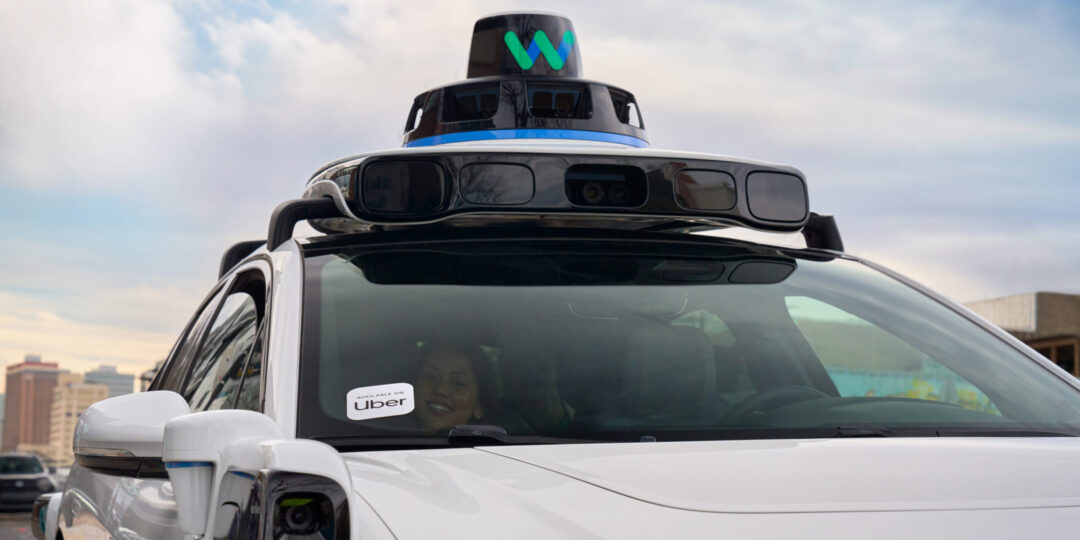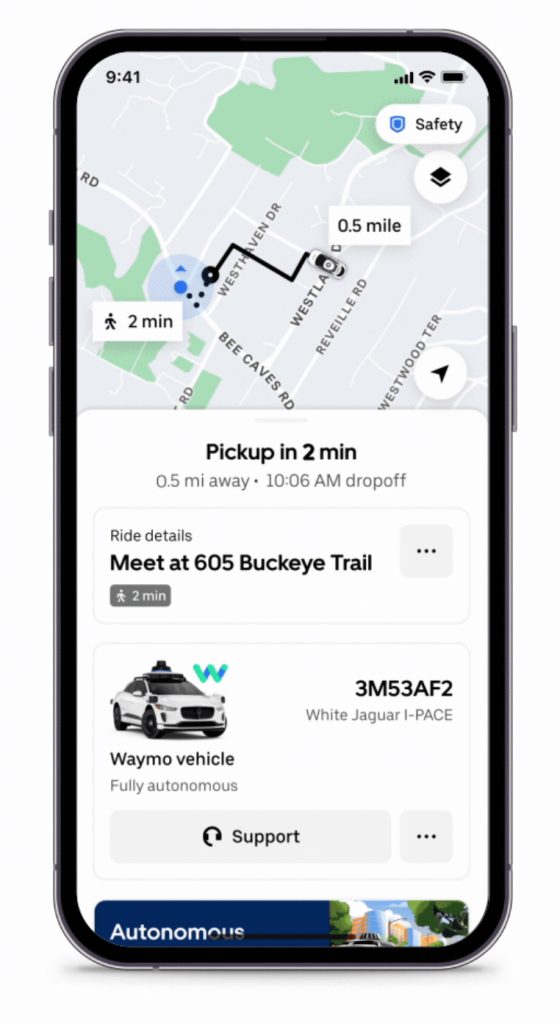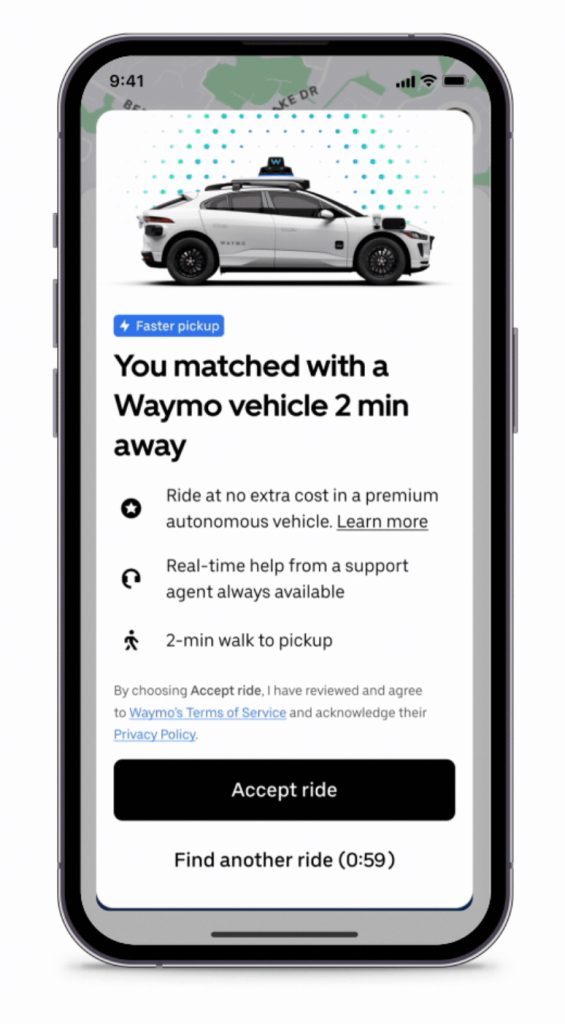News
Waymo, Uber launch driverless ride-hailing in Austin
The commercial robotaxi industry is heating up.

As the emerging commercial robotaxi space grows with Tesla and others set to start deploying self-driving ride-hailing services, Waymo, the robotaxi firm owned by Google parent company Alphabet, has officially launched driverless taxis in Texas, with the help of Uber.
As of Tuesday, those in Austin can officially take a driverless Waymo robotaxi using the Uber app, as detailed in a press release from the ride-hailing company. The launch comes as Tesla is expected to debut Unsupervised Full Self-Driving (FSD) services in Austin later this year, and after it was found to have applied for a permit to operate ride-hailing vehicles in California.
To access the Waymo robotaxis, users must opt in for the service on the Uber app at no additional cost. When awaiting rides, riders will have the option to accept the driverless Waymo robotaxi or to switch to a non-self-driving vehicle instead.
Additionally, riders will be able to use the Uber app to unlock the vehicle, open the trunk, and activate the trip, and the ride-hailing company also says it’s providing 24/7 customer support in case of any issues. The area of operation will allow riders to travel across 37 square miles of Austin, from Hyde Park to Downtown to Montopolis, and Uber also says the company plans to expand the service area in the future.
The launch also comes ahead of the South by Southwest (SXSW) music festival in Austin this weekend, which is expected to bring in bands and music enthusiasts from all over the world.
- Credit: Uber
- Credit: Uber
READ MORE ON ROBOTAXIS, TESLA’S FSD:
- Tesla is going in-house for robotaxi platform, says one competitor
- Tesla China owners share first impressions of FSD-style ‘City Autopilot’
- Tesla used this clever workaround to train FSD for China’s roads
- Tesla FSD’s rollout in Mexico is a bigger deal than it seems
- Cruise layoffs begin as GM winds down robotaxi business
- Waymo to test self-driving vehicles in another country in 2025
- Waymo study analyzes collisions with vulnerable road users
Waymo currently operates paid, self-driving ride-hails via an in-house platform through the Waymo One app in Los Angeles and around San Francisco, California, as well as in Phoenix, Arizona. As part of the announcement, Uber also says that the two companies will be partnering to launch robotaxi services in Atlanta, Georgia next.
During Tesla’s Q4 earnings call in January, CEO Elon Musk said that Tesla plans to launch its Unsupervised FSD system as a paid service in Austin in June. Tesla also operates a Gigafactory in Austin, where it builds the Model Y and the Cybertruck, and Musk has said launching in the city would let the company “dip its toe in the water” of commercial robotaxis with safety in mind.
In October, Musk also said that Tesla had been testing internal ride-hails for employees in the Bay Area, California, adding that users could already request a ride and be dropped off anywhere in the Bay. Last week, it was also widely reported that Tesla had in November applied for a “transportation charter-party carrier permit” from the California Public Utilities Commission (CPUC), which is the agency that helps regulate the state’s autonomous vehicles.
Tesla also launched its two-seat, steering wheel-less Cybercab in October during a Southern California event dubbed “We, Robot,” and you can see our coverage from the event below.
🎥: Our FULL first ride in the @Tesla Cybercab pic.twitter.com/6gR7OgKRCz — TESLARATI (@Teslarati) October 11, 2024
Tesla mobile app tracker reports first lines referencing robotaxi service

News
Tesla FSD fleet is nearing 7 billion total miles, including 2.5 billion city miles
As can be seen on Tesla’s official FSD webpage, vehicles equipped with the system have now navigated over 6.99 billion miles.

Tesla’s Full Self-Driving (Supervised) fleet is closing in on almost 7 billion total miles driven, as per data posted by the company on its official FSD webpage.
These figures hint at the massive scale of data fueling Tesla’s rapid FSD improvements, which have been quite notable as of late.
FSD mileage milestones
As can be seen on Tesla’s official FSD webpage, vehicles equipped with the system have now navigated over 6.99 billion miles. Tesla owner and avid FSD tester Whole Mars Catalog also shared a screenshot indicating that from the nearly 7 billion miles traveled by the FSD fleet, more than 2.5 billion miles were driven inside cities.
City miles are particularly valuable for complex urban scenarios like unprotected turns, pedestrian interactions, and traffic lights. This is also the difference-maker for FSD, as only complex solutions, such as Waymo’s self-driving taxis, operate similarly on inner-city streets. And even then, incidents such as the San Francisco blackouts have proven challenging for sensor-rich vehicles like Waymos.
Tesla’s data edge
Tesla has a number of advantages in the autonomous vehicle sector, one of which is the size of its fleet and the number of vehicles training FSD on real-world roads. Tesla’s nearly 7 billion FSD miles then allow the company to roll out updates that make its vehicles behave like they are being driven by experienced drivers, even if they are operating on their own.
So notable are Tesla’s improvements to FSD that NVIDIA Director of Robotics Jim Fan, after experiencing FSD v14, noted that the system is the first AI that passes what he described as a “Physical Turing Test.”
“Despite knowing exactly how robot learning works, I still find it magical watching the steering wheel turn by itself. First it feels surreal, next it becomes routine. Then, like the smartphone, taking it away actively hurts. This is how humanity gets rewired and glued to god-like technologies,” Fan wrote in a post on X.
News
Tesla starts showing how FSD will change lives in Europe
Local officials tested the system on narrow country roads and were impressed by FSD’s smooth, human-like driving, with some calling the service a game-changer for everyday life in areas that are far from urban centers.

Tesla has launched Europe’s first public shuttle service using Full Self-Driving (Supervised) in the rural Eifelkreis Bitburg-Prüm region of Germany, demonstrating how the technology can restore independence and mobility for people who struggle with limited transport options.
Local officials tested the system on narrow country roads and were impressed by FSD’s smooth, human-like driving, with some calling the service a game-changer for everyday life in areas that are far from urban centers.
Officials see real impact on rural residents
Arzfeld Mayor Johannes Kuhl and District Administrator Andreas Kruppert personally tested the Tesla shuttle service. This allowed them to see just how well FSD navigated winding lanes and rural roads confidently. Kruppert said, “Autonomous driving sounds like science fiction to many, but we simply see here that it works totally well in rural regions too.” Kuhl, for his part, also noted that FSD “feels like a very experienced driver.”
The pilot complements the area’s “Citizen Bus” program, which provides on-demand rides for elderly residents who can no longer drive themselves. Tesla Europe shared a video of a demonstration of the service, highlighting how FSD gives people their freedom back, even in places where public transport is not as prevalent.
What the Ministry for Economic Affairs and Transport says
Rhineland-Palatinate’s Minister Daniela Schmitt supported the project, praising the collaboration that made this “first of its kind in Europe” possible. As per the ministry, the rural rollout for the service shows FSD’s potential beyond major cities, and it delivers tangible benefits like grocery runs, doctor visits, and social connections for isolated residents.
“Reliable and flexible mobility is especially vital in rural areas. With the launch of a shuttle service using self-driving vehicles (FSD supervised) by Tesla in the Eifelkreis Bitburg-Prüm, an innovative pilot project is now getting underway that complements local community bus services. It is the first project of its kind in Europe.
“The result is a real gain for rural mobility: greater accessibility, more flexibility and tangible benefits for everyday life. A strong signal for innovation, cooperation and future-oriented mobility beyond urban centers,” the ministry wrote in a LinkedIn post.
News
Tesla China quietly posts Robotaxi-related job listing
Tesla China is currently seeking a Low Voltage Electrical Engineer to work on circuit board design for the company’s autonomous vehicles.

Tesla has posted a new job listing in Shanghai explicitly tied to its Robotaxi program, fueling speculation that the company is preparing to launch its dedicated autonomous ride-hailing service in China.
As noted in the listing, Tesla China is currently seeking a Low Voltage Electrical Engineer to work on circuit board design for the company’s autonomous vehicles.
Robotaxi-specific role
The listing, which was shared on social media platform X by industry watcher @tslaming, suggested that Tesla China is looking to fill the role urgently. The job listing itself specifically mentions that the person hired for the role will be working on the Low Voltage Hardware team, which would design the circuit boards that would serve as the nervous system of the Robotaxi.
Key tasks for the role, as indicated in the job listing, include collaboration with PCB layout, firmware, mechanical, program management, and validation teams, among other responsibilities. The role is based in Shanghai.
China Robotaxi launch
China represents a massive potential market for robotaxis, with its dense urban centers and supportive policies in select cities. Tesla has limited permission to roll out FSD in the country, though despite this, its vehicles have been hailed as among the best in the market when it comes to autonomous features. So far, at least, it appears that China supports Tesla’s FSD and Robotaxi rollout.
This was hinted at in November, when Tesla brought the Cybercab to the 8th China International Import Expo (CIIE) in Shanghai, marking the first time that the autonomous two-seater was brought to the Asia-Pacific region. The vehicle, despite not having a release date in China, received a significant amount of interest among the event’s attendees.










